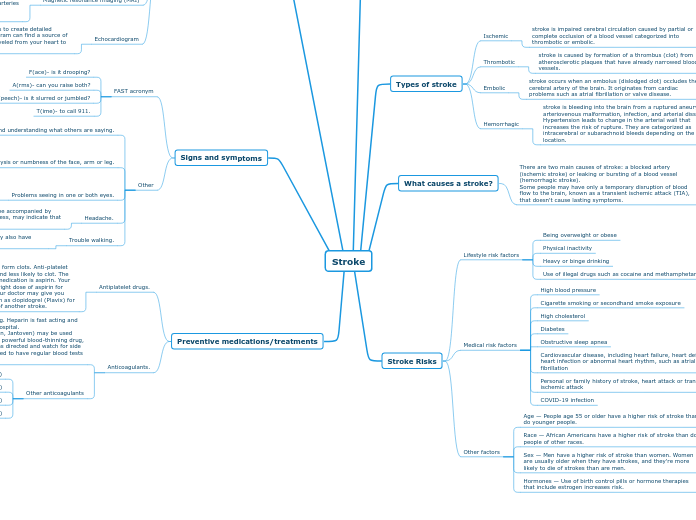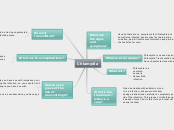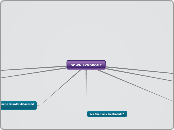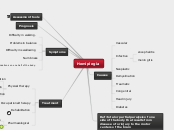作者:Lisa Hernandez 6 天以前
20
Myocardial Infarction (MI)
A heart attack, also known as a myocardial infarction, occurs when blood flow to a part of the heart is blocked, often by a blood clot or plaque in the arteries. Quick medical intervention is essential to prevent severe damage or death.
開啟
Heart attack or MI is when blood can't get to some heart parts. It happens when arteries have plaque or a clot, blocking blood flow. Without quick treatment, heart muscle dies, causing big problems or death. Myocardial Infarction (MI) Prevention Stress reduction Blood pressure and cholesterol management
Subtopic Smoking cessation
Regular exercise
Healthy diet (low-fat, low-sodium)
Complications
Sudden cardiac arrest Pericarditis Cardiogenic shock Heart failure Arrhythmias Treatment Medications Beta-blockers
ACE inhibitors
Statins
Antiplatelets (e.g., clopidogrel) Reperfusion
Percutaneous Coronary Intervention (PCI)
Thrombolysis Immediate: Aspirin, nitroglycerin, oxygen therapy, morphine Diagnosis Imaging Echocardiogram Coronary angiography
Blood Tests: Elevated cardiac biomarkers (e.g., troponins) confirm heart muscle damage. Electrocardiogram (ECG): Identifies abnormal heart rhythms or patterns of ischemia. Risk Factors Non-Modifiable Gender (men have a higher risk, though women often experience worse outcomes) Family history of heart disease Age (higher risk in men over 45 and women over 55) Modifiable Sedentary lifestyle
Obesity Diabetes
High cholesterol
High blood pressure Smoking Symptoms Other Signs -Nausea or vomiting
-Cold sweats
-Lightheadedness or dizziness
-Fatigue (especially in women) Shortness of Breath: Often occurs alongside chest discomfort. Radiating Pain: May spread to the arms, neck, jaw, shoulder, or back. Chest Pain or Discomfort: Often described as pressure, tightness, or heaviness, lasting more than a few minutes. Causes Other rare causes: Coronary artery dissection or embolism. Blood clot: Often forms at the site of a ruptured plaque, fully blocking an artery. Coronary artery spasm: Temporary tightening of a coronary artery, restricting blood flow. Atherosclerosis: Buildup of plaque (fat, cholesterol, and other substances) in coronary arteries, leading to blockages.









